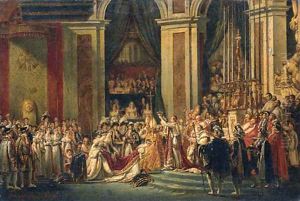Jacques-Nol-Marie Frmy Paintings
Jacques-Nol-Marie Frémy was a French painter, born on December 25, 1814, in Paris, France. Although not as widely recognized as some of his contemporaries, Frémy was a proficient artist whose work reflected the academic and neoclassical styles that were prevalent in France during the 19th century. He studied under prominent artists of the time, such as François-Édouard Picot, who was known for his large-scale historical and mythological paintings.
Frémy's career unfolded during a period of significant transformation in the French art world, with the rise of the Romantic movement followed by the advent of Realism and Impressionism. Despite these shifts in artistic trends, Frémy remained largely committed to the academic traditions of his training. His own works often incorporated historical, religious, and mythological subjects, executed with a focus on precision and adherence to classical compositional techniques.
Throughout his career, Jacques-Nol-Marie Frémy exhibited his works at the Paris Salon, the official art exhibition of the Académie des Beaux-Arts in Paris. The Salon was the most prestigious art event in France and being accepted to exhibit there was a mark of recognition and respect. Frémy's participation in the Salon demonstrated his acceptance and moderate success within the artistic establishment of his time.
Despite the quality of his work, Frémy did not achieve the same level of fame as some of his peers. The art historical record on Frémy is relatively sparse, which can make it challenging to construct a detailed account of his life and career. As a result, Frémy is one of the many 19th-century artists who, while skilled and respected in their own time, have not been the subject of extensive modern scholarship.
Jacques-Nol-Marie Frémy passed away on March 28, 1886, in Paris. His works remain a testament to the academic art traditions of the 19th century and serve as historical documents of the era's aesthetic preferences and techniques. Although his legacy may not loom as large as that of some of his contemporaries, his contributions to French art history are nonetheless valued by those who study the period.
